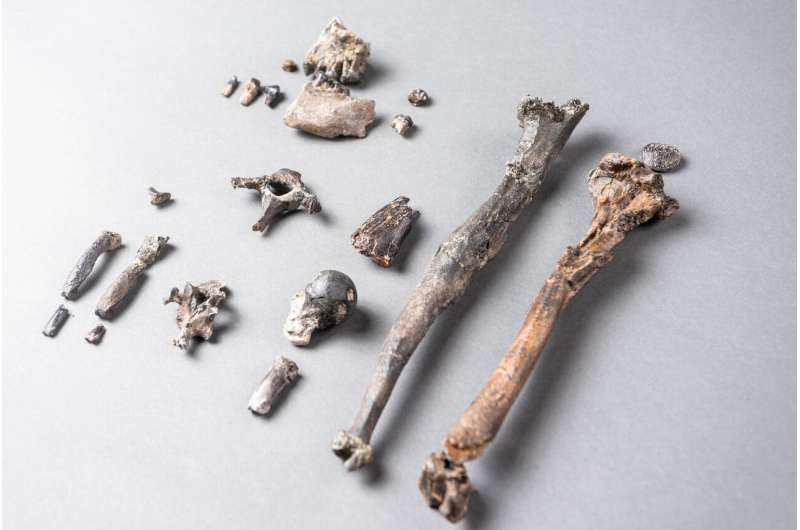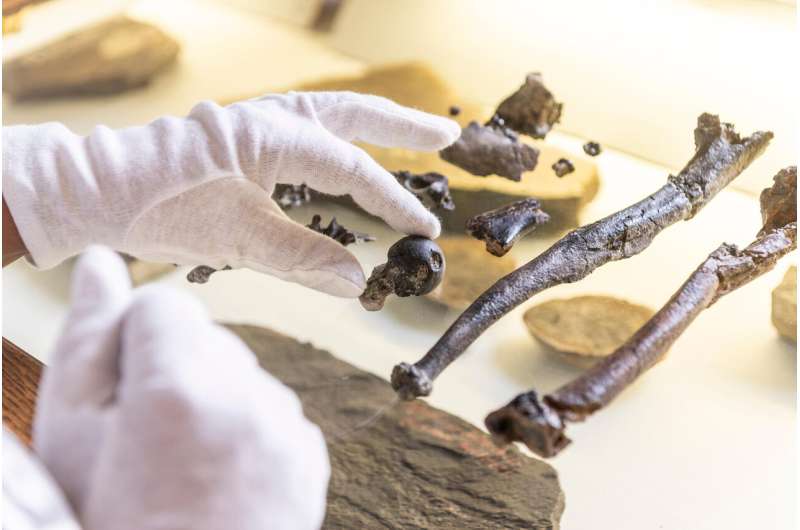New fossil find sheds light on how humans learned to walk

How did humans learn to walk upright?
Did they come down from the trees able to amble on their hind legs, or did they develop that skill after one or two years million on the ground?
In the absence of compelling fossil evidence, two competing theories have long vied to answer this fundamental question about human evolution.
The first suggests that humans walking upright evolved from a four-limbed creature, similar to living monkeys, which could put its whole foot flat on the ground.
The second theory posits that the evolution occurred from chimpanzee-like animals that learned to stand up first before climbing out of the trees.
Experts in both camps generally agreed that our forebear took their first upright steps between five and seven million years ago.
On that point, however, it seems that may all be wrong.
Writing in the journal Nature, scientists describe fossils from a previously unknown species dating back 11.6 million years that suggests a new form of "positional behaviour" they call "extended limb clambering".
A team led by Madelaine Boehme, a professor at the University of Tubingen, said the ape, Danuvius guggenmosi, had complete limb bones, which were unearthed in southern Germany.
This crucially allowed them to deduce that it would have been able to hang from branches by its arms.

It would also have been able to hold its hind limbs straight, with a foot which could have been put on the ground.
"With a broad thorax, long lumbar spine and extended hips and knees, as in bipeds, and elongated and fully extended forelimbs, as in all apes, Danuvius combines the adaptations of bipeds" with apes that hang from tree limbs, they concluded.
This provides "a model for the common ancestor of great apes and humans."
Common ancestor?
From the standpoint of evolution, in other words, Danuvius guggenmosi may have been able to walk on its hind legs in the trees before it reached the ground, not afterwards.
In a commentary on the research, Tracy L. Kivell at the University of Kent in England said answering the question of how and why apes evolved into walking human beings depends a lot on how they were able to move around beforehand.
"Did it evolve from an ancestor that lived mainly in the trees, or were these ancestors already walking on all fours on the ground and subsequently evolved to stand up and walk on two feet?"
Kivell noted that African apes—chimpanzees, bonobos and gorillas—spend most of their time on the ground walking on their knuckles, though they climb into trees for food, protection and to sleep.
In contrast, orangutans—whose name translates as "man of the jungle"—will walk standing on their hind legs along branches, an echo, some argue, of the ancestors of modern humans.
The new research, Kivell said, points to an ape which moved in a previously unknown way that could be "the best model yet of what a common ancestor of humans and African apes might have looked like."
On that basis, it "would get us closer to answering how and why our human ancestors became less dependent on life in the trees and fully embraced two-footed terrestrial locomotion," she added.
More information: Madelaine Böhme et al. A new Miocene ape and locomotion in the ancestor of great apes and humans, Nature (2019). DOI: 10.1038/s41586-019-1731-0
Journal information: Nature
© 2019 AFP




















